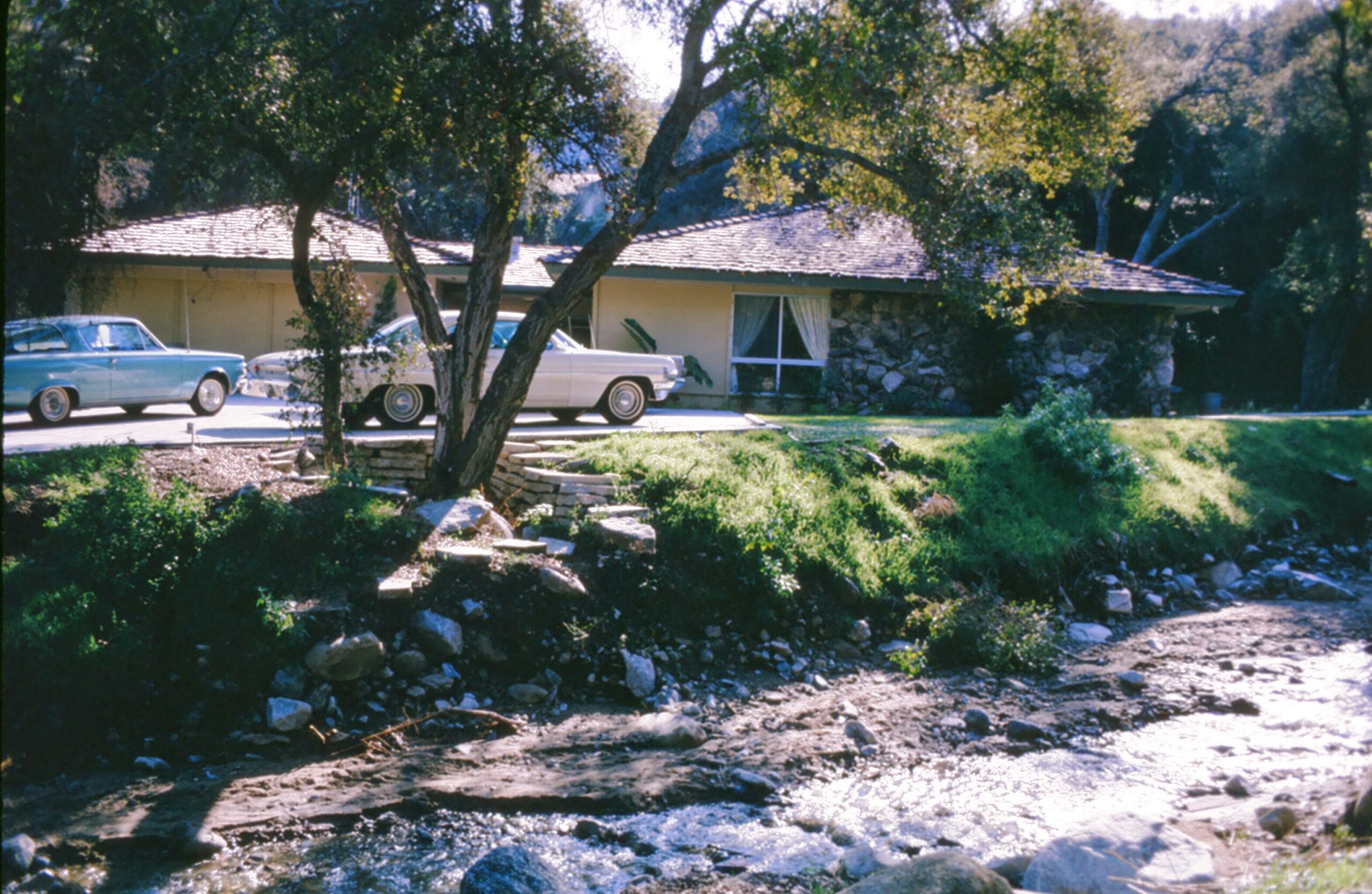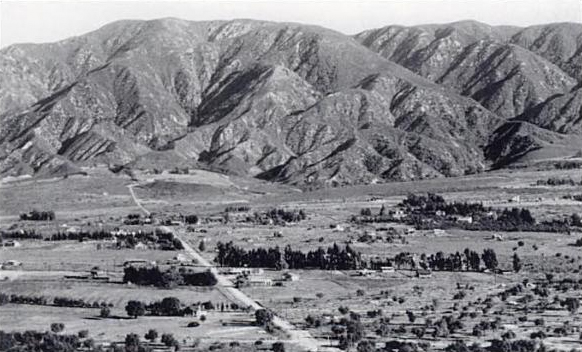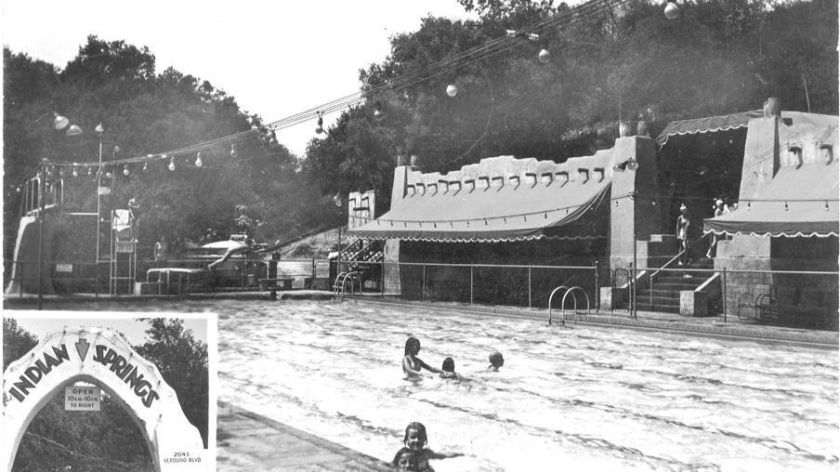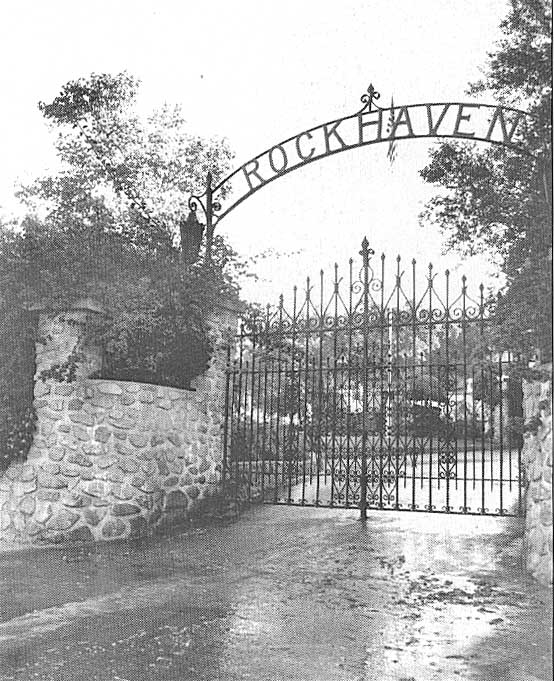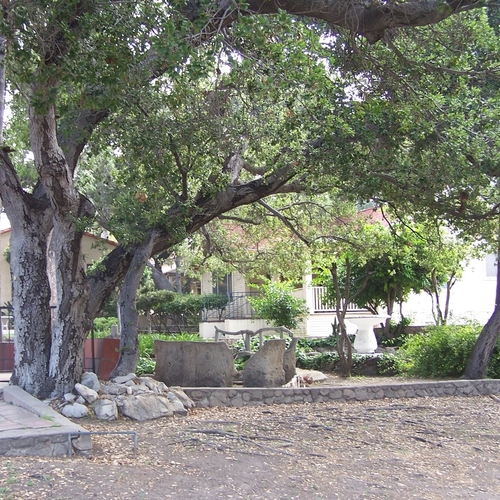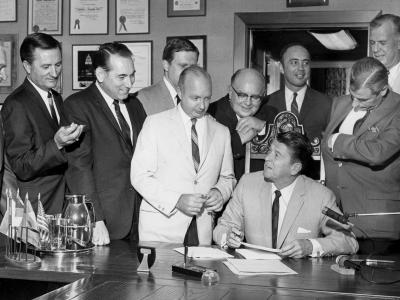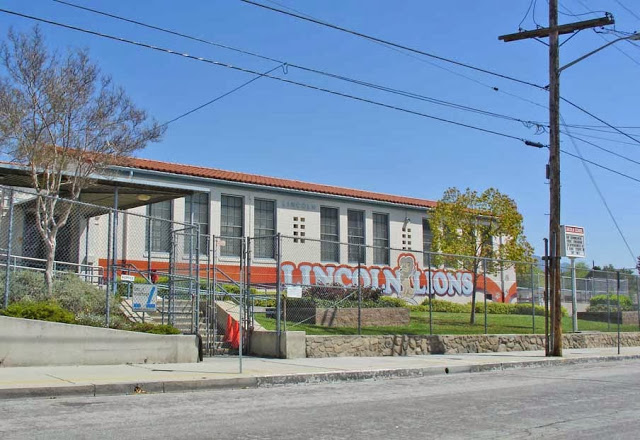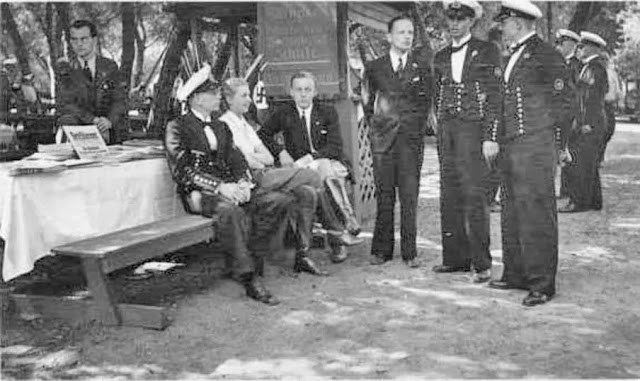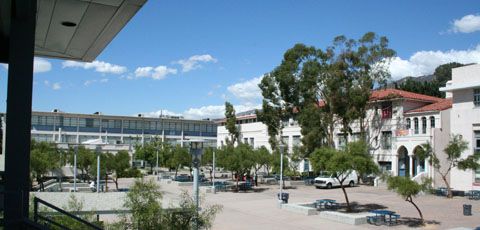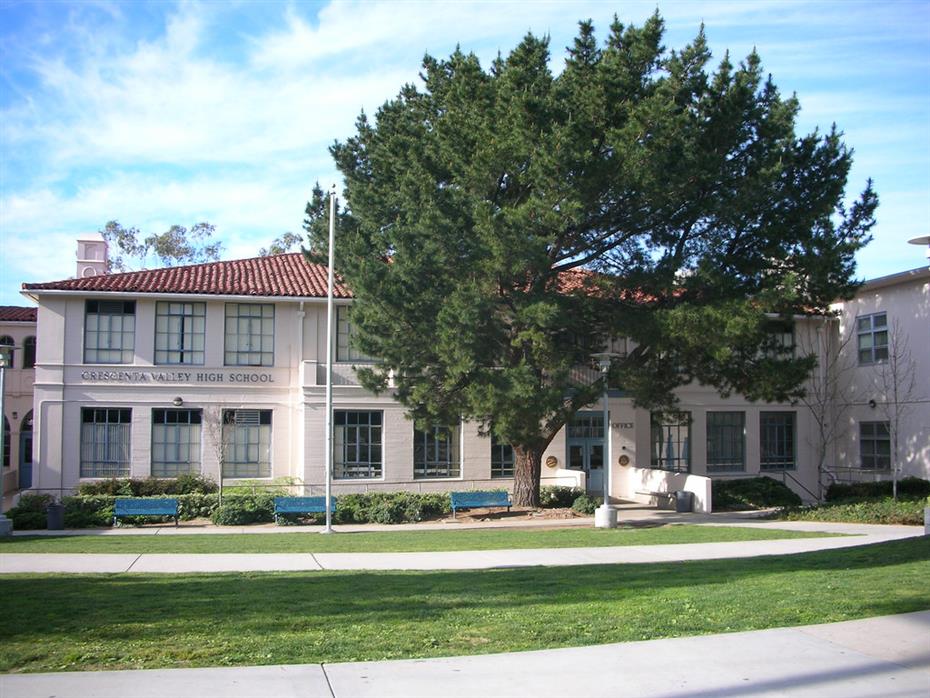I grew up in the suburbs of Hollywood in a small town that housed Marilyn Monroe’s mother. La Crescenta is tucked into the Verdugo Mountains and was named after the settler, Don Jose Verdugo, in 1784. The Tongva Indians inhabited the area before that.
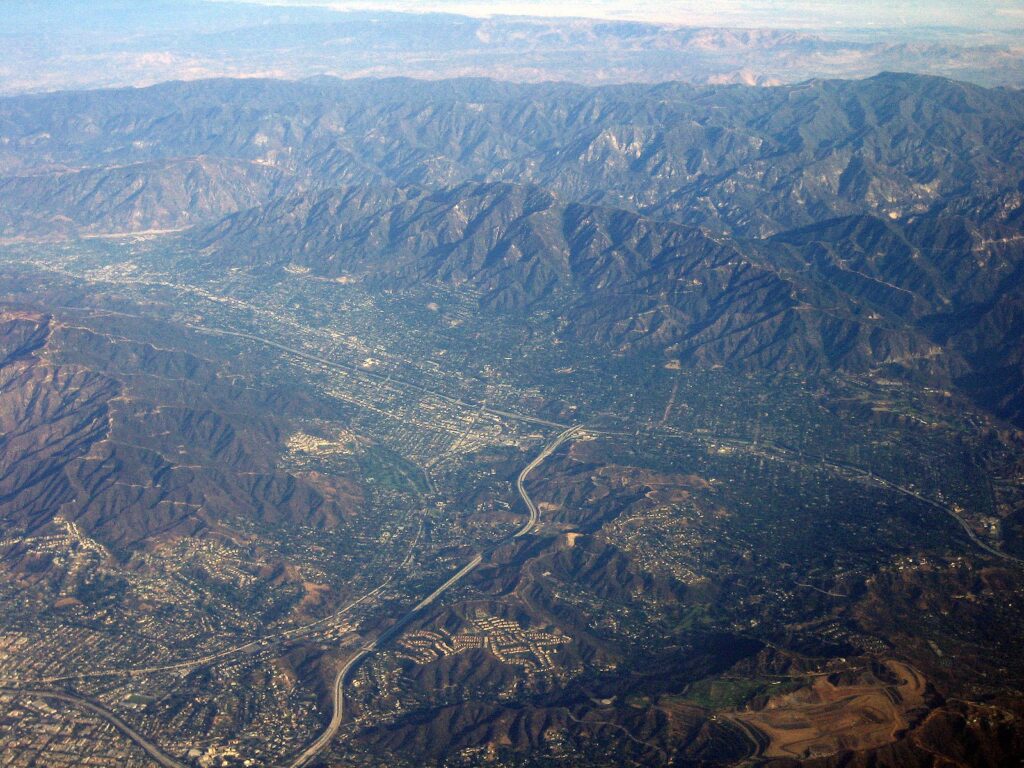
The community of La Crescenta is in the center of the picture, approximately where Highway 210 (East-West/Right-Left) and Highway 2 (North-South/Center to lower left) intersect.A section of the 134 freeway is visible in the lower left.
In the 1960s, I remember a public swimming pool located in Indian Springs — 2043 W. Verdugo Blvd. I was never allowed to swim there for fear of polio. But in the 40s, it was the hot spot for Olympic divers. There’s a shopping center there now.
Marilyn Monroe’s mother was a resident of one of the many sanitariums in La Crescenta. In the 1880s, a physician from Indiana, Dr. Benjamin Briggs, decided to stay — he liked the healthy climate and opened health clinics and a school.
Rockhaven Sanitarium was established as a healthy retreat for women in 1924 by a nurse after the World War. It became the choice for prominent people from Hollywood, such as Gladys Baker, Marilyn Monroe’s mother, and Josephine Dillion, Clark Gable’s first wife. (Gable and Lombard had a cabin nearby). Billie Burke — Glenda the Good Witch in the Wizard of Oz — was a resident. It was a cozy little place under the coastal oaks.
Although the doctors chose La Crescenta because of its healthy climate, in the 1960s, I remember the smog. On certain days, the air was so polluted that it hurt my lungs to breathe. I still recall that feeling. In 1967, governor Ronald Reagan formed the California Air Resource Board, which raised the standards, so today, when I visit, I never feel the lung pain. But, I remember that breathing was always worse while swimming.
My parents were familiar with the Verdugo area. My mom was a native Californian, and my dad had been living in nearby Burbank. He worked at Lockheed Aircraft. We settled in Whiting Woods. The school I attended for elementary was established in 1924 and named Lincoln School after President Abraham Lincoln. Kids in neighboring schools called it “stinkin lincoln.”
Demographically speaking, La Crescenta was mainly Caucasian, though many residents came from German ancestry. Our neighborhood park was initially named Hindenberg Park and was a gathering place for Nazi rallies in the 30s and 40s. I think they cleared out by the 60s, though my piano teacher was a German, and counted off the beats like a Nazi officer. And it made me cry. The park was later named La Crescenta Park, and we had our 6th-grade picnic there where some dumb boys chased me around and tried to kiss me. I’m not very fast, and I recall getting tackled to the ground.
We had air-raid practices — big sirenes went off, and we ducked under our desks to protect ourselves from bombs. Luckily, that ever happened, because that wouldn’t have helped.
As a child, I was unaware of any cultural differences. Everyone was white. Our community was what I saw on television – Father Knows Best, Leave it to Beaver, Ozzie, and Harriet, My Three Sons, Bewitched. Burbank — home to the television studios — was my neighboring town.
In kindergarten, the teacher taught us to nice to raise our hands, and take naps on special little napping pads brought from home. I was afraid of the teacher, Mrs. Ready. I stepped in dog poop during recess and quietly sat at my desk, afraid to tell her. She probably would have scolded me and benched me (like she did when I broke me seashell that I had brought from home to “share”.) Maybe more Nazi mentality than I realized. My second grade teacher, Miss Teramina, stood on her desk and blew her whistle at us.
Parents were active in their children’s education only by paying dues to the Parent Teachers Association (PTA). It was prestigious if your mom was the PTA president. We honored Christmas and Easter as holidays. If there were Jewish kids in our class, they went unnoticed—no dreidle songs. I don’t know if there was a Jewish Synagogue in town — I only remember Christian churches, the Presbyterian, the Church of Latter-Day Saints, the Lutheran, and a Masonic Temple.
Anglo-Saxon, white Christian families filled the elementary, junior high, and high schools in the area. I’m pretty sure we had some Nazi supporters for teachers. We walked to school, car-pooled, rode the school bus or drove. The girls wore dresses, the boys wore pants, and on occasion, we might have a special “pants day” for girls. In high school, some kids smoked tobacco, back behind the school, on “tobacco road.” Long hair was not permitted, so some of the boys wore short-haired wigs to school. I only knew of a few boys who smoked marijuana.
In junior high school (grades 7-9), teachers passed out tests to analyze our “intelligence” and then placed us in classes based on our test scores. One of my teachers called me out for more testing, along with some other students. We worthy of being placed in advanced math and English courses and encouraged to go to the school library and read extra books – one being Catcher in the Rye, which was not allowed in the regular classroom. I only went a few times. Seemed boring to me.
I was not part of any popular clique, but more on the fringe. From my perspective, this was partly due to my strict Mormon beliefs. I didn’t go to parties, drink, or smoke. The dominant culture were white Christians. Therefore I was not aware of any cultural division.
One time, while in 9th grade I told some boy at school I couldn’t go to a party because I had a golf lesson — yea, they teased me about that. But, really, in 9th grade, I had private golf lessons down at Oakmont Country Club — I guess my dad was hoping I would become a pro.
I was serious about grades and graduated valedictorian. The 1960s California culture rolled into the 70s.
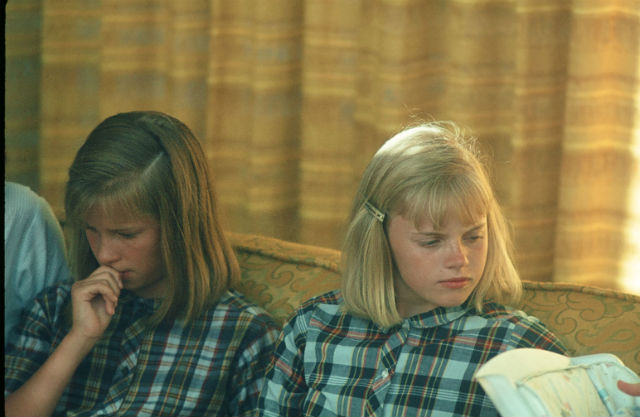
One of my friends, Donna, at our beach house in Huntington.

